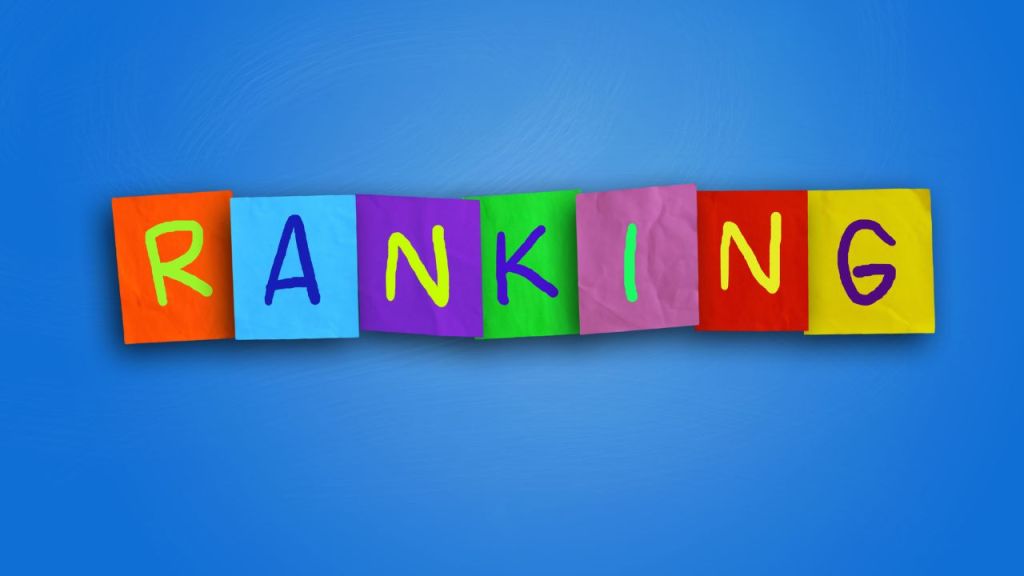Are broken links hurting your website’s performance? They can confuse visitors and harm search engine rankings. Broken link building offers a way to fix this while boosting your SEO.
Keep reading to learn how it works—and why it’s worth your time!
What Is Broken Link Building?
Broken link building focuses on fixing dead links to improve websites. A dead link, also called a broken link, shows a “404 Not Found” error. This happens if pages are removed, URLs change, or sites disappear.
This SEO technique finds these broken connections and replaces them with your content’s links. The process helps both parties—websites fix their errors while you earn backlinks that boost search engine optimization rankings.
How Does Broken Link Building Work?
This strategy follows three main steps. First, find broken links on related websites using tools like Ahrefs or SEMrush. These links lead to missing pages and create a chance for a new link.
Next, craft valuable content to replace the dead link. The content should match or improve upon the original topic. Lastly, reach out to site owners with a polite pitch suggesting your new link as an alternative.
Benefits of Broken Link Building
Fixing broken links isn’t just about SEO; it’s like killing two birds with one stone—your site gets stronger, and you help others improve theirs.
Improves SEO rankings
Broken link building boosts SEO by earning external backlinks. Google views these as “votes of confidence,” which help rank your site higher. Backlinks from sites with high Authority Scores (AS) strengthen this effect even more.
A stronger backlink profile signals to search engines that your content is valuable and trustworthy, improving rankings over time.
Prioritizing links with traffic potential adds extra SEO value. For example, if a broken link on a popular tech blog points to you instead, it can drive organic traffic while boosting visibility in search results.
This strategy hits two birds with one stone—better ranking and real visitors!
Increases referral traffic
A broken link can turn into a hidden goldmine for referral traffic. By targeting pages with high authority and consistent visitors, you earn backlinks that direct readers to your content.
For example, EverydayHealth had 19,594 broken backlinks and 1,214 pages linked. Fixing those links could drive massive traffic from their established audience.
“Traffic isn’t where it ends; it’s where opportunities begin.”
More clicks mean more eyes on your site. These referrals can bring engaged users who value quality information. Strong referral links also boost trust since they come from sources people already follow or respect.
Builds relationships with website owners
Sharing helpful fixes for broken links opens doors. Website owners appreciate the support, as it improves their site’s quality. This goodwill can spark long-term connections. Strong relationships with content creators may lead to future collaborations or guest posting opportunities.
Following up boosts response rates too. Many webmasters miss initial emails amid busy schedules. A polite reminder keeps your pitch on their radar and shows you’re serious about helping them improve their site.
Over time, these efforts strengthen trust and build rapport in linkbuilding campaigns.
How to Do Broken Link Building
Broken link building might sound tricky, but it’s easier than you think. With a clear plan and the right tools, you can turn dead links into solid opportunities!
Identify broken backlinks
Finding broken backlinks is the first step. This process helps locate link opportunities that can boost your site.
- Use tools like Semrush or Ahrefs to scan websites for broken links. These tools can quickly identify errors such as “404 Not Found.”
- Filter results specifically for pages with “404 Not Found” errors. This narrows down your search and saves time.
- Sort the data by referring domains to prioritize valuable opportunities. More referring domains mean stronger potential impact.
- Check if these broken links relate to your industry or content niche. Relevant links are more likely to gain approval.
- Verify that the original content matches the type of content you plan to offer as a replacement. Relevant, quality alternatives stand a better chance.
Now that you’ve identified weak points in competitors’ link strategies, it’s time to focus on creating replacement content!
Find competitors’ broken backlinks
Competitors’ broken backlinks can be a goldmine for new opportunities. These links show what content has worked and where you can step in.
- Use tools like Semrush or Ahrefs to analyze competitor backlink profiles. These tools identify websites linking to 404 pages.
- Filter these results to find broken backlinks quickly. Focus on pages showing “404 Not Found” errors for better chances of success.
- Sort by referring domains, not individual links, to target websites with the most impact first.
- Check if the broken link connects to content relevant to your niche or audience.
- List these websites as potential targets for outreach efforts.
This next step focuses on evaluating which link opportunities are worth your time and effort!
Evaluate link opportunities
It’s crucial to assess each link opportunity before moving forward. Not all broken links are worth chasing, so you should focus on value and relevance.
- Check the Authority Score (AS) using Semrush. Aim for sites with an AS closer to 100, as higher scores mean better-quality backlinks.
- Look at the website’s traffic potential. More traffic equals bigger opportunities for exposure and clicks.
- Avoid links with high toxicity scores over 44, since these could harm your SEO efforts instead of helping them.
- Assess the page’s topic match with your content. A strong connection between topics improves link acceptance rates and relevancy for readers.
- Focus on sites that target the same audience as yours—this maximizes impact while keeping incoming traffic relevant to your niche.
- Verify if the broken link had past engagement or clicks using analytical tools like Google Analytics or Semrush data.
- Ensure that outdated content you’re replacing fills a real gap—it should offer more value than what was initially there.
- Prioritize websites actively maintained by responsive owners; this speeds up communication and increases success chances.
Create high-quality replacement content
High-quality content is key to successful broken link building. It encourages website owners to link back to your site.
- Research the broken link’s original page using the Wayback Machine. This tool shows what the page used to look like before it went offline.
- Update old data or stats found on the original page. For example, replace outdated facts with recent studies from 2023 or newer reports.
- Simplify any complicated concepts. Break down tough ideas into easy-to-read language that readers can quickly grasp.
- Add visuals like charts, infographics, and images. Engaging visuals improve readability and attract attention from visitors and site owners alike.
- Provide extra value by expanding on the topic of the broken link’s content. Include new angles, insights, or tips that make your content stand out.
Contact website owners with a pitch
Reaching out to website owners is a key step. A well-crafted pitch can make all the difference.
- Address them by name in your email for a personal touch.
- Mention the broken link clearly and explain where you found it.
- Offer a replacement link that matches their content theme or need.
- Keep the message short, friendly, and easy to read.
- Use clear subject lines like “Found a broken link on your site.”
- Send follow-up emails after three business days if you don’t hear back.
This approach will help build trust while increasing your chances of success! Continue refining by targeting authoritative websites for stronger results next.
Best Practices for Broken Link Building
Focus on quality over quantity, always. A thoughtful approach can open doors for better connections and results.
Target authoritative websites
Authoritative websites carry more weight for SEO. They often have high traffic and strong domain authority, giving links from them extra value. Use tools like Ahrefs to analyze their outgoing links.
Spot broken pages on these sites linked to high-authority domains.
Pitching relevant fixes to these sites boosts your chances of success. Website owners usually prefer quality content as replacements for broken links. Targeting such sites helps amplify your reach and improves rankings faster.
Personalize outreach messages
Use the person’s name in your email greeting. It feels more personal and less robotic. Mention the broken link on their website directly by page or section. Provide a clear replacement link to make things easy for them.
Keep your message short but engaging. Avoid long-winded details; get straight to the point. A friendly tone works wonders, so sound like a human, not a template!
Monitor results and refine strategies
Track progress using tools like Semrush Link Building Tool. Check how many links were fixed or gained. Keep an eye on traffic and rankings to see improvements. Numbers don’t lie, so focus on those metrics.
Follow up with site owners who didn’t reply. Many miss emails the first time. Adjust your pitch if needed to boost responses and success rates. Learning from what works will sharpen future efforts.
Advanced Broken Link Building Strategies
Advanced tactics can give you an edge in fixing broken links. These methods dig deeper, opening doors to smarter link-building opportunities.
Using competitor link reclamation
Spotting broken links in a competitor’s backlink profile can unlock big opportunities. Use tools like Semrush or Ahrefs to scan for “404 Not Found” errors on their sites. These are prime chances to claim those lost backlinks by offering your own content instead.
Focus on pages that had strong backlinks originally pointing at them. These might still have value for other site owners. Pitch website owners with fresh, useful replacement content tied directly to the missing link topic.
This strategy helps you grab traffic and authority once linked to your rivals!
Leveraging broken link analysis tools
Broken link analysis tools like Semrush and Ahrefs make this process faster. The Semrush Backlink Audit Tool can find broken backlinks on your site or others. Use the Semrush Link Building Tool to send outreach emails and track their progress without hassle.
Ahrefs helps uncover both broken links and outgoing links from high-authority sites. This saves time by showing real opportunities quickly. These tools give accurate data, helping you focus on valuable leads instead of wasting effort elsewhere.
Conclusion
Broken link building is a smart and proven SEO strategy. It helps you fix dead links while gaining valuable backlinks to boost your site’s ranking. With the right steps, strong content, and thoughtful pitches, it can open doors to great opportunities.
It may take time, but the payoff is worth it—both for traffic and connections!












